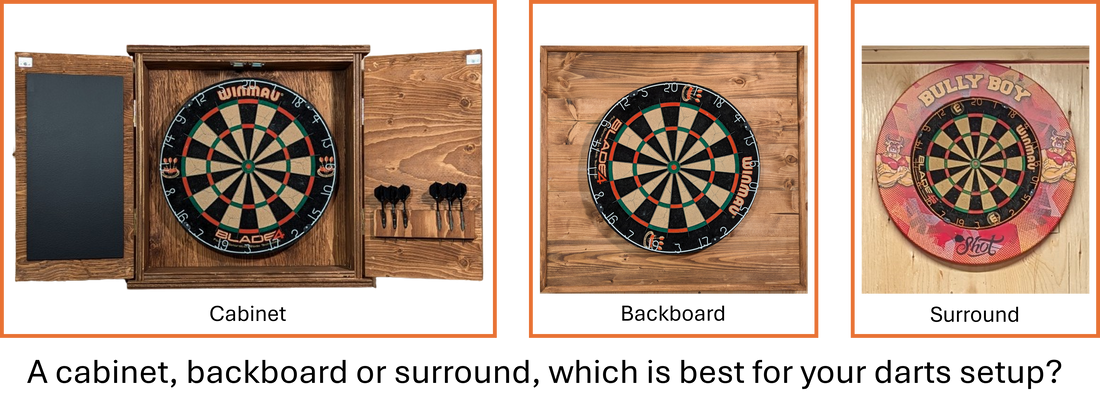
Setting Up Your Dartboard
Share
Playing darts can be a fun and engaging pastime, but setting up your dartboard correctly is essential to maximize your enjoyment and protect your home. Let's explore the fundamental components needed and the best practices for hanging your dartboard.
Essential Equipment
To play a game of darts, you'll need the following:
- Dartboard: The focal point of the game, where players aim to score points.
- Set of Three Darts: Standard darts for each player to throw.
- Scoreboard: Keeps track of scores for each round.
You'll also need enough space to stand 7 feet 9 inches from the board comfortably. Ensure there are no obstacles, like low-hanging lights, that might interfere with your throw.
Hanging Your Dartboard
The center of the dartboard should be 5 feet 8 inches from the floor. Most dartboards come with a bracket, making it easy to hang them. In homes with drywall, finding a stud to anchor your board is crucial. With the bracket in hand, you might consider simply hanging the board on the wall, but is this the best idea? Consider these factors before deciding.
Protecting Your Walls and Enhancing Your Setup
Missed darts can damage your walls while the hitting a wall could damage your darts, and an exposed dartboard might look out of place in a common area. To address these issues, consider using a Surround, Backboard, or Cabinet.
Dartboard Cabinet
A dartboard cabinet, in my opinion, is the best option and offers multiple benefits:
- Wall Protection: Catches missed darts, protecting your walls.
- Scoreboard: Built-in scoreboards on the cabinet doors.
- Storage: Space for darts and accessories.
- Dartboard Protection: Made of durable materials to keep your board in good condition.
- Design Options: Choose from various designs.
- Easy Installation: Comes with simple instructions and necessary fittings.
Much like a piece of art you would hang on a wall, a cabinet offers the further benefit of enhancing the aesthetic of a room. A further consideration is that serious players may find that the board appears sunken if a cabinet is too deep. A cabinet is also likely the most expensive option.
Dartboard Backboard
If a cabinet is not what you are looking for then I would suggest the next best option is backboard. A backboard can enhance your dart setup with:
- Wall Protection: Shields walls from darts.
- Customizable Designs: Available in various colors and designs.
- Easy Setup: Comes with simple instructions and necessary fittings.
- Aesthetic Appeal: Provides an attractive backdrop.
- Beginner-Friendly: Larger backboards are ideal for newcomers.
As with the cabinet, a backboard will enhance the aesthetic of a room. Unlike a cabinet, the dartboard is always on full display on a backboard and therefore is less protected. The exposed board might be desirable for those who play often or want the focus to be more on the board than the accessory.
Dartboard Surround
A very straightforward option is a darts surround. I find these best for people who move their board to multiple locations, have their set up in a wreck room or perhaps outdoors. The surround offers benefits, such as:
- Board Stability: Keeps the dartboard in place during play.
- Point Protection: Prevents damage to dart points from hard surfaces.
- Denser Foam Options: Offers superior wall protection with higher-end models.
Conclusion
Selecting the right setup for your dartboard—whether it's a cabinet, backboard, or surround—can greatly enhance your playing experience and preserve your home’s aesthetic. Choose the option that best suits your needs and enjoy a safer, more enjoyable game of darts.
